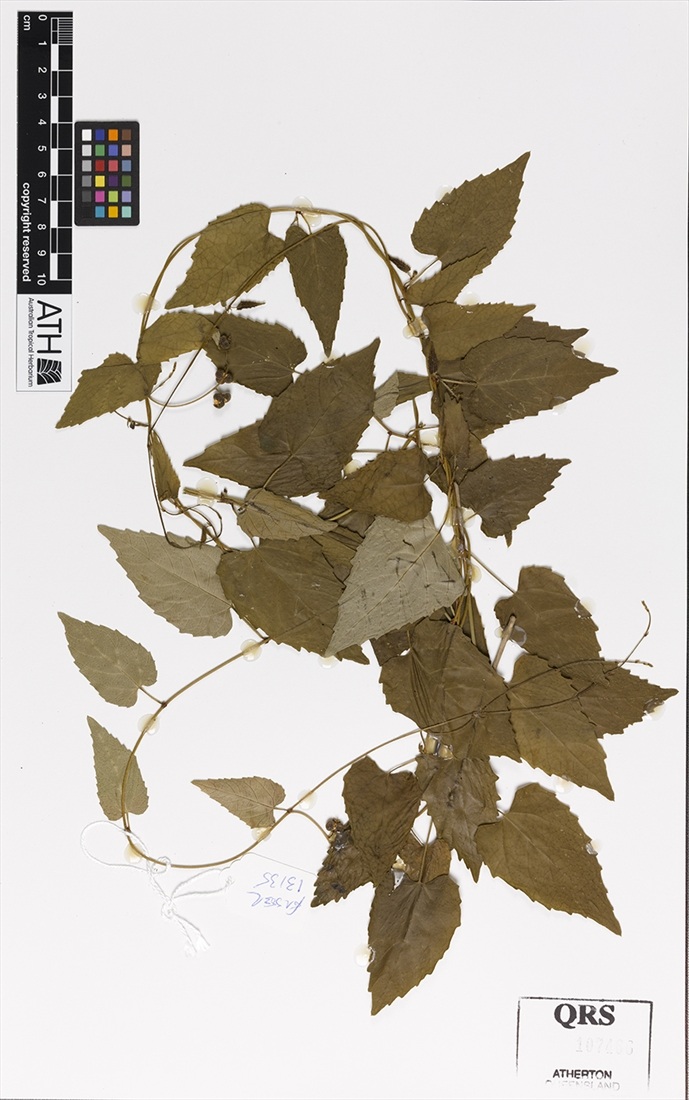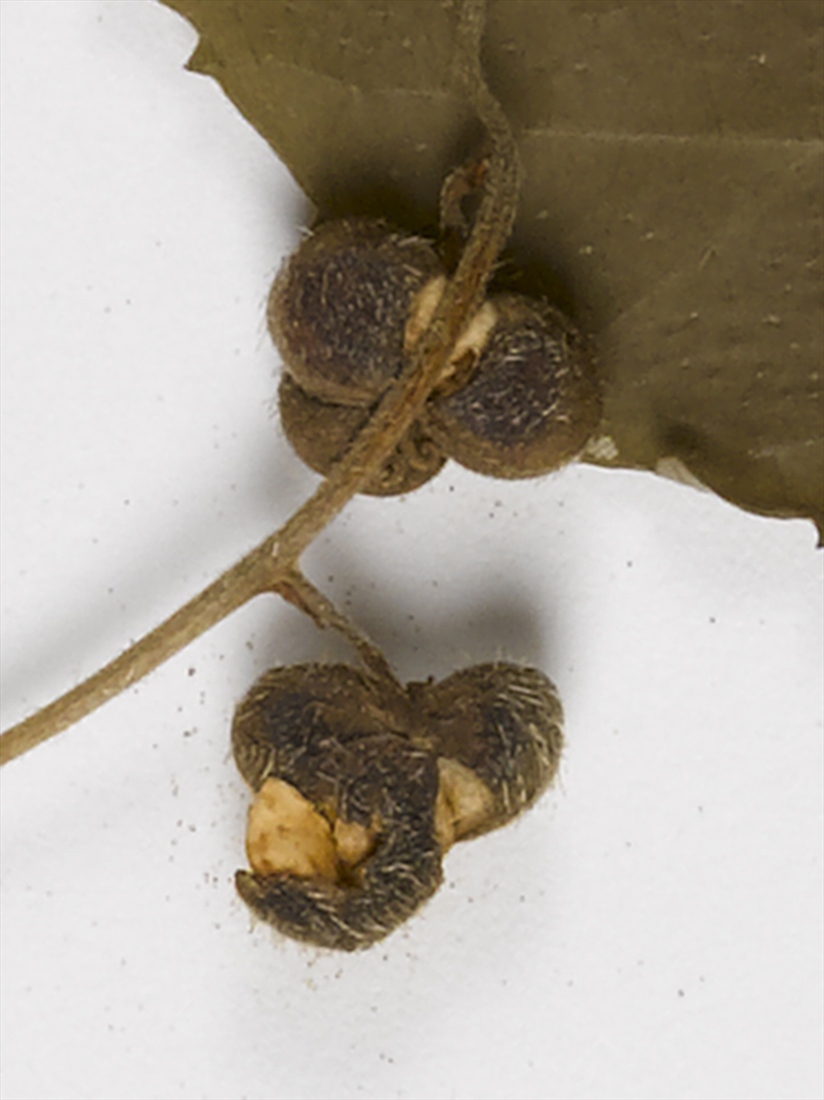Australian Tropical Rainforest Plants - Online edition
Tragia novae-hollandiae Müll.Arg.
Mueller, J. von (Aargau). Linnaea: ein Journal für die Botanik in ihrem ganzen Umfange, oder Beiträge zur Pflanzenkunde 34: 180. (1865), Type: "In Nova-Hollandia orientali ad Clarence River et Keppel-Bay (F. Müll.! in hb. DC.)
Stinging Vine
A slender twining vine, perennial, up to 4 m long. Stems with scattered to dense retrorse hairs when young, becoming hairless with age, stinging and non stinging hairs present.
Leaves simple, alternate. Stipules 2, free, lanceolate, 1-3 mm long. Petiole 2-4 mm long, with stinging hairs. Leaf blades ovate to ± triangular or lanceolate, 3-10 cm long, 1.5-5 cm wide, base cordate, margins serrate, sometimes more dentate at basal end of leaf blade, apex acute. Venation palmate, with and 2 or 3 pairs of veins radiating from base and 5-8 pairs of lateral veins. Upper surface dark green, sometimes hairless but usually with scattered tubercle-based non-stinging hairs and stinging hairs (collapsed in dried material), ± sessile glands, lower surface pale green and with scattered stinging and non-stinging hairs, at least along veins.
Inflorescences terminal or axillary, racemose. Flowers unisexual, plants monoecious, actinomorphic. perianth of 5 or 6 tepals, free or shortly fused at base, lanceolate to ovate, 1.4-2.4 mm long, green. Male flowers 1-3 per bract, pedicels 0.8-4 mm long; female flowers below male flowers in same inflorescence, 1 per bract, pedicels 1-2 mm long. Peduncle and pedicels with stinging and non-stinging hairs present, bracts sparsely hairy or glabrous, tepals glabrous. Male flowers with 3-5 stamens, anthers sessile on a glabrous receptacle. Female flowers with a 3-locular superior ovary, hairy, styles 3, shortly fused at base, branched at apex into 3 recurved stigmas.
Features not available.
This profile information and associated coding has been adapted from Forster (1994), and Harden et al. (2014).







